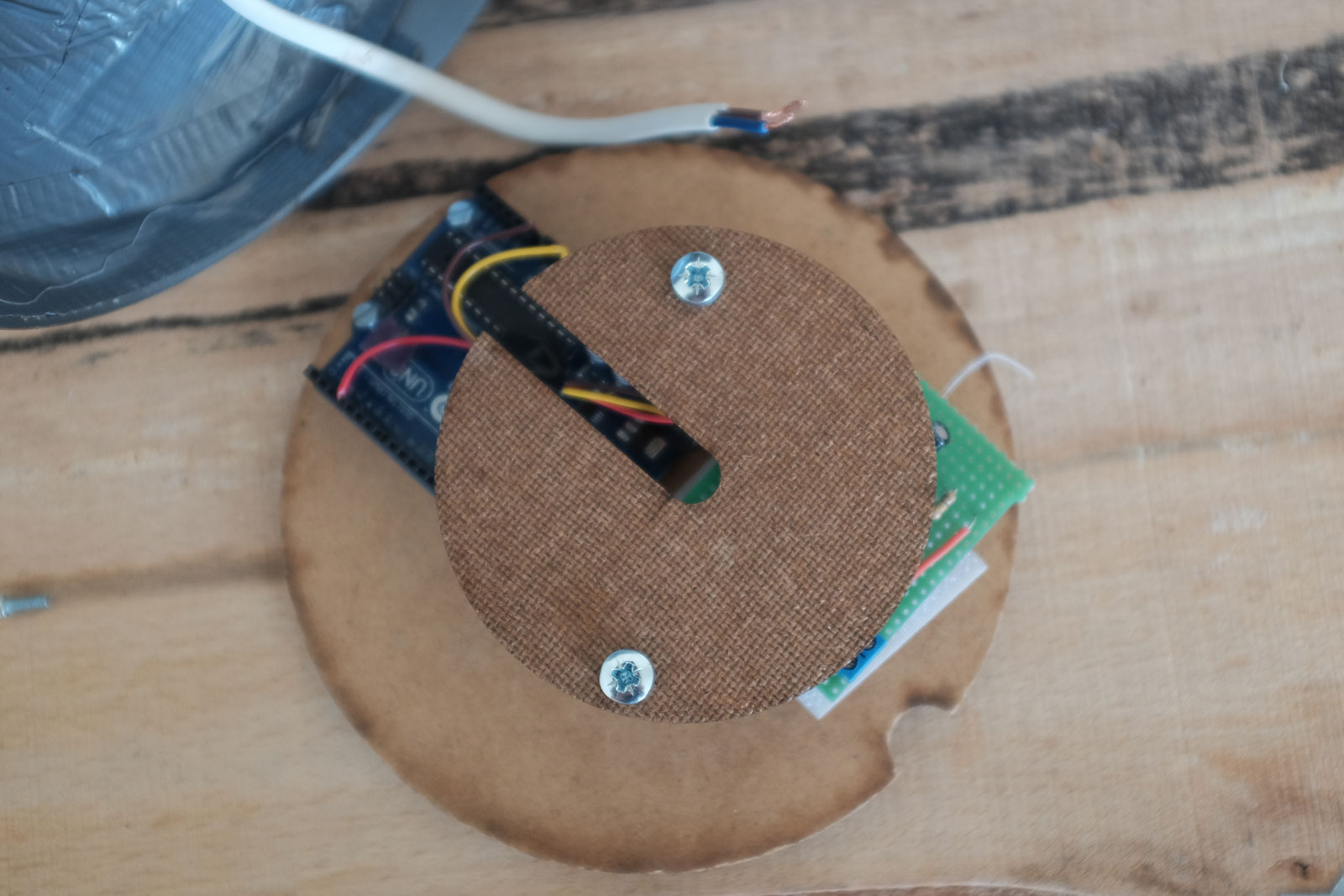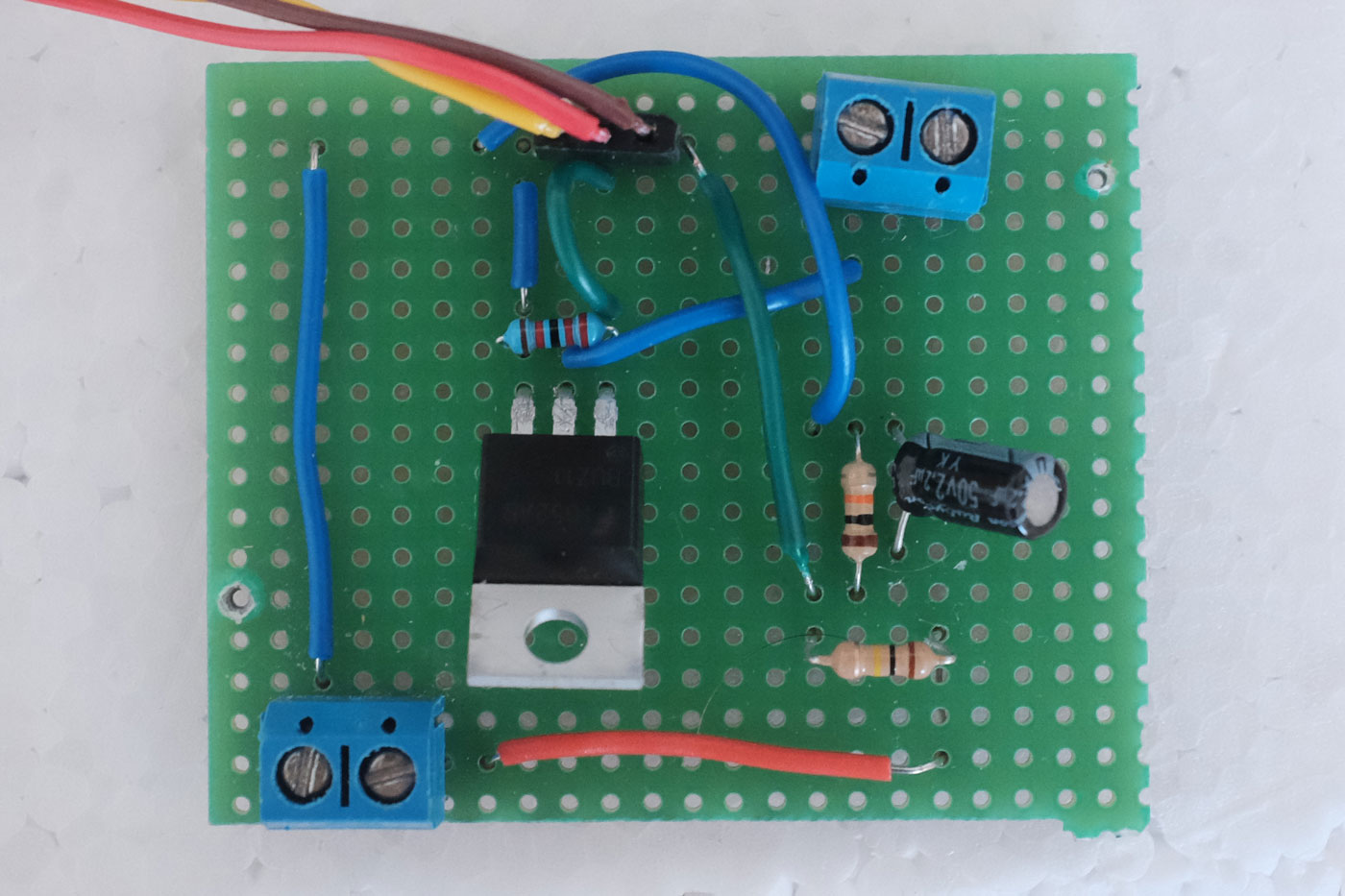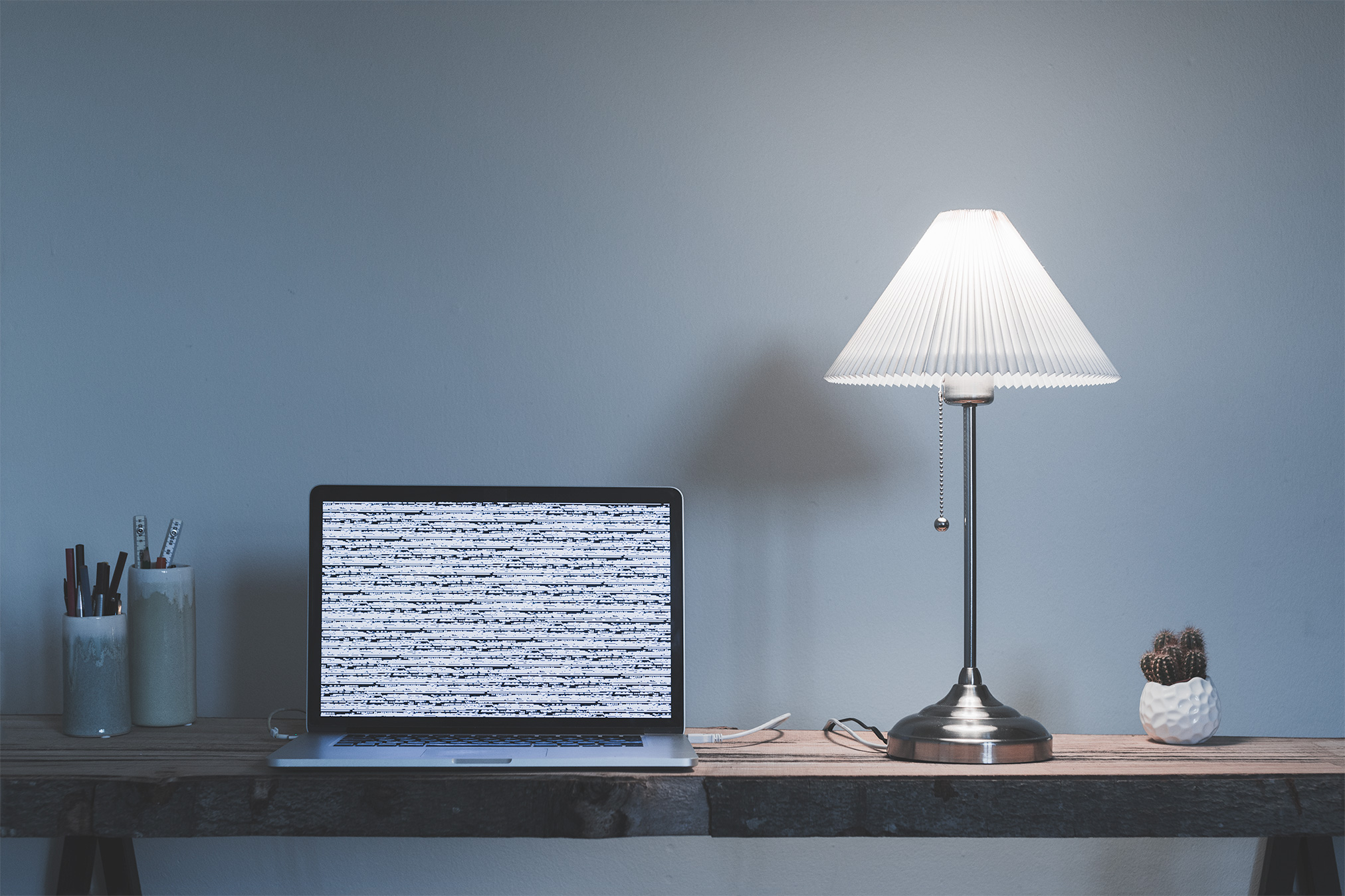
Privacy Lamp
2017, data visualisation, critical design
Tools used
Processing, Arduino, Carnivore Processing Library
The internet and Wi-Fi we have in our homes are just one among several “invisible” forces and infrastructures, that play a big part in our everyday lives. Our data is sent through hidden infrastructure that in the background supports and facilitates our connectivity. But this ongoing traffic and depth of the Internet are not visible for the average user. What we see in our browser window does not reveal the full picture of what is actually happening when we are spending time online.
Every mouse click and action we do online, leave breadcrumbs of personal information, while behavioral trackers and strangers are constantly surveillance our actions when we spend time online. Often without our awareness. With a focus on these privacy issues, this project has aimed to provoke alternative relationships between users and their internet use through a critical domestic object. My focus has been on the narratives that people develop and relate to their Internet use and privacy through the use of the object.
PrivacyLamp takes the form of a classic desk lamp. The only visible difference is a USB cable coming out from the stand, right next to the power cable. However, its functionality differs radically from a normal lamp. First PrivacyLamp will not light up before it’s connected to a computer with USB, and its enclosed software is launched.
By pulling the lamp’s string switch the light will switch on. However, this will also activate the lamp's secondary (dis)functionality, being "recording mode". It will now record the local network for potential third-party-trackers.
While the Lamp at first functions as a regular lamp, the light source starts to get interrupted by small flickers from the bulb while the user browsers around on the computer. Over time the flickers will increase and patterns will appear if watched closely. The flickering or interruptions is the lamp's reaction on the third-party trackers located on the local network.
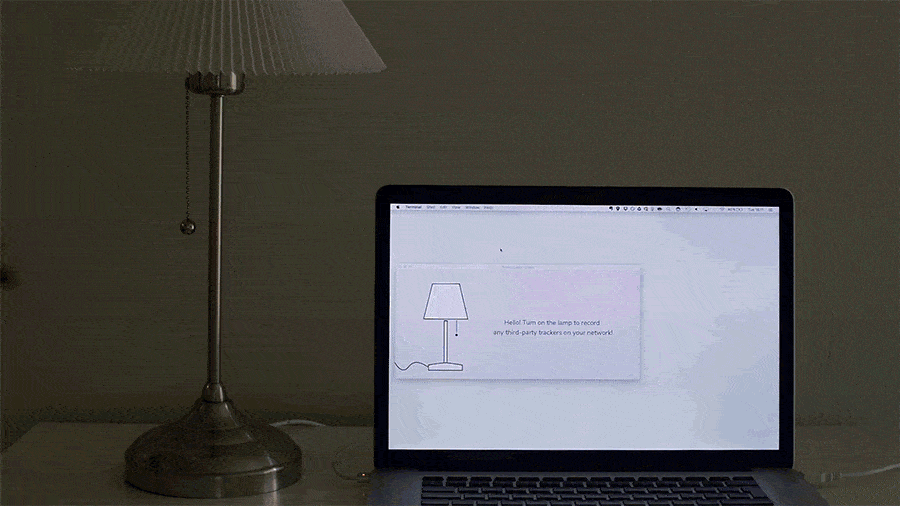
When a specific tracker returns multiple times, the flickers get longer and more intense, as a way to visualize if the interruption was caused by a returning tracker or just a one-time visit. If the user desires he can turn off the light, by pulling the string switch, and the lamp will exit recording mode, and go into resume mode.
Now a list of the most visiting trackers during the recording time is displayed on the UI, with information about the company behind the tracker, including company name, location (country and city), and how many times the tracker was encountered on the user's network.
No history is stored and the lamp can only record when it's turned on. When the lamp is turned off and then is turned back on it will also start a new recording. This is an active choice to design for an experience that forces its user to experience its ambient impact in real-time before getting presented with detailed information about who actually caused the flickering.
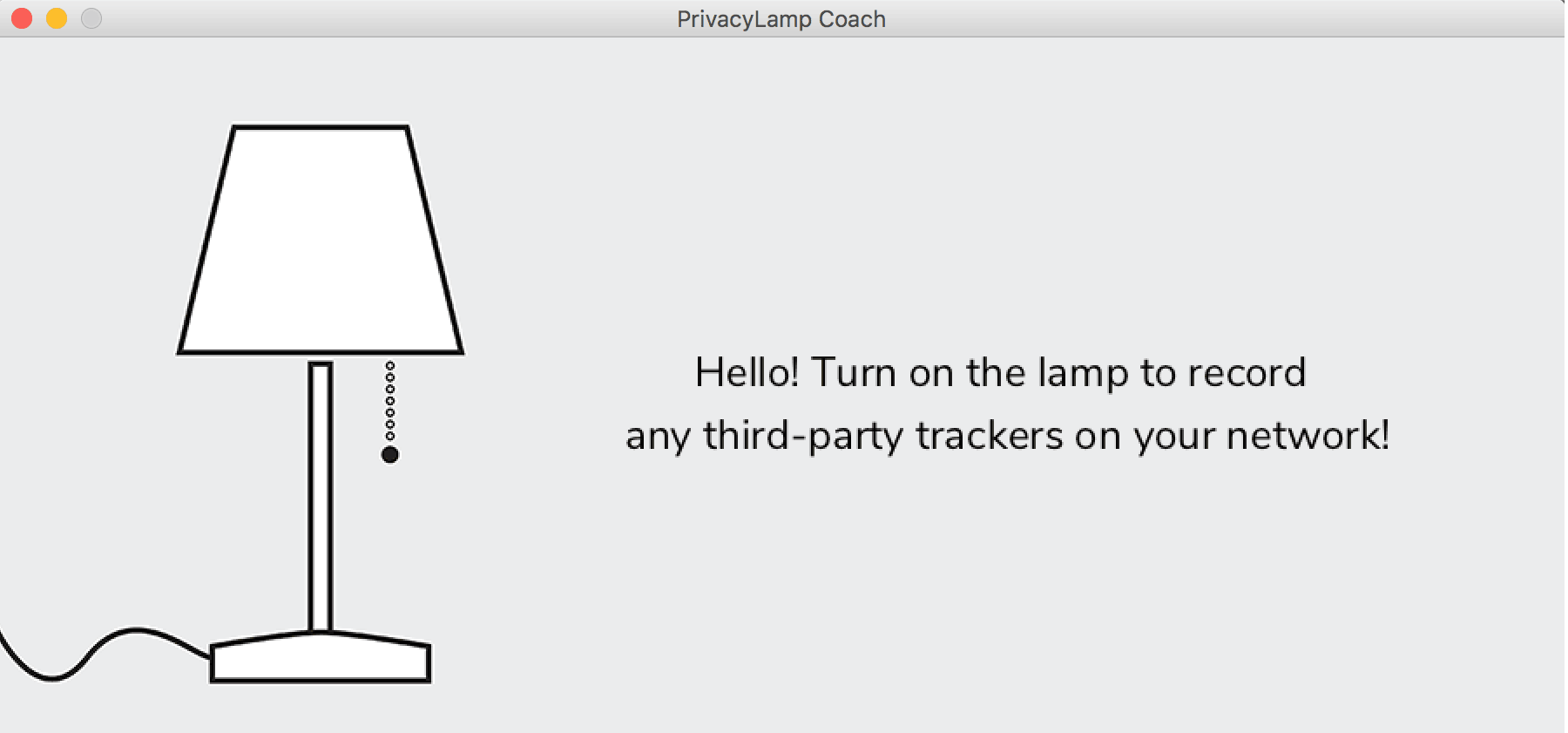
PrivacyLamp has been designed as a provocative probe to explore and get a qualitative understanding of users' experience of third-party-trackers and privacy. Experiments have taken place in the homes of the participants, who have been asked to adapt PrivacyLamp to be a part of their domestic setting during the experiments. Six participants have been living their daily life with the lamp as a part of their home.
After the participants had lived with the prototype for a planned duration, follow-up interviews were conducted to get a more exhaustive description of each participant's experience with the lamp. The focus was on how the experience made them reflect and relate to their internet usage, and how it challenged their current values and perception of online privacy in relation to third-party-trackers.


“I was searching on Google, and for each word I finished (in the search bar) the lamp flickered a bit. And it continued until the whole sentence was done. I don’t know if it was a coincidence. For a moment it felt like somebody was live streaming me”
PrivacyLamp is made from an Ikea lamp of the model ÅRSTID. An Arduino Uno is installed in the base part of the lamp together with a circuit to control the bulb's light density, as well as to measure whenever the lamp is turned on or off by the string switch.
The Arduino communicates with the enclosed software through the USB. The software is a Java application created with Processing
The software uses the Carnivore library to record incoming packages and the IP addresses behind. The incoming IPs is identified using an IP geolocated API from ip-api.com. When the company name behind the incoming IP is known, it gets compared to a dataset of potential trackers by DisconnectMe
